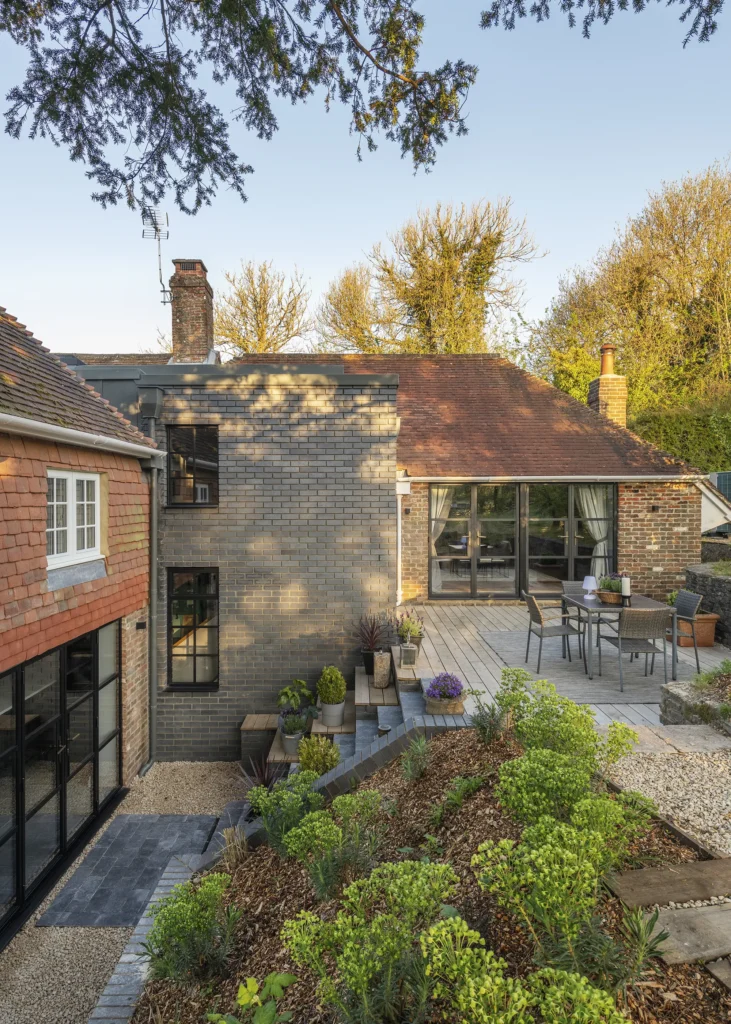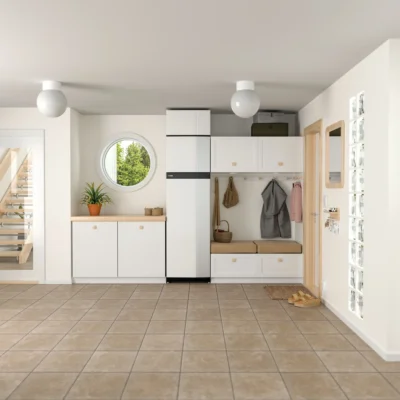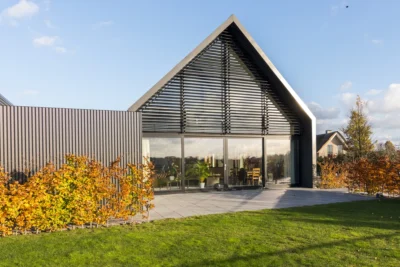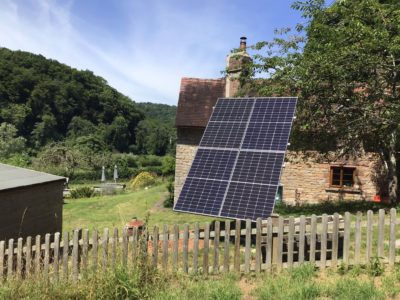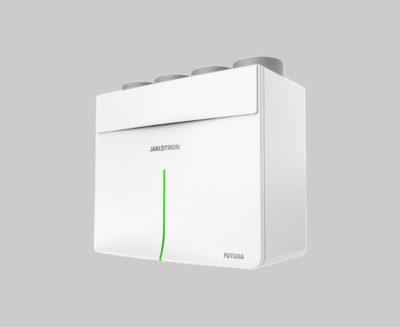Should You Replace Your Boiler with a Heat Pump? The Pros, Cons & Costs
Are you considering replacing your existing boiler with an efficient heat pump? Well, you may have heard that heat pumps aren’t very good at heating old houses. And while that’s sometimes true, it’s not always the case. Much depends on what sort of building it is, and what you mean by ‘good’.
Is the key consideration how hot the house gets, how quickly it warms up or what the system will cost to run, for instance? The decision on whether to replace a boiler with a heat pump (HP) in an old house therefore depends on several factors, including:
- The nature and condition of the original building fabric.
- Whether the property holds any heritage status and potential impact on this.
- The existing heating distribution system.
- Relative size of demand for hot water from your household.
- How much you’re willing to spend upfront on a heat pump, the running costs and carbon emissions.
In this article, I’ll explore each of these considerations in turn, so that those of you living in older homes can make an informed decision about whether or not you should replace your boiler with a heat pump.
Assess The Building’s Fabric When Replacing Your Boiler with a Heat Pump
Heat pumps work best in well-insulated and airtight properties. In other words, they don’t like being overtaxed (none of us do!) and are most efficient when running steadily at low level. This requires a building that’s good at retaining heat.
Old houses rarely do this well, for two reasons. Firstly, they were built before we understood the principles of insulation. And secondly, they have numerous natural air leakage pathways. This includes gaps through suspended floors, through junctions with walls, around window and door frames, services penetrations, and any open chimneys.
Essential Advice: Heat Pump Guide: What Are Heat Pumps & How Do They Work?
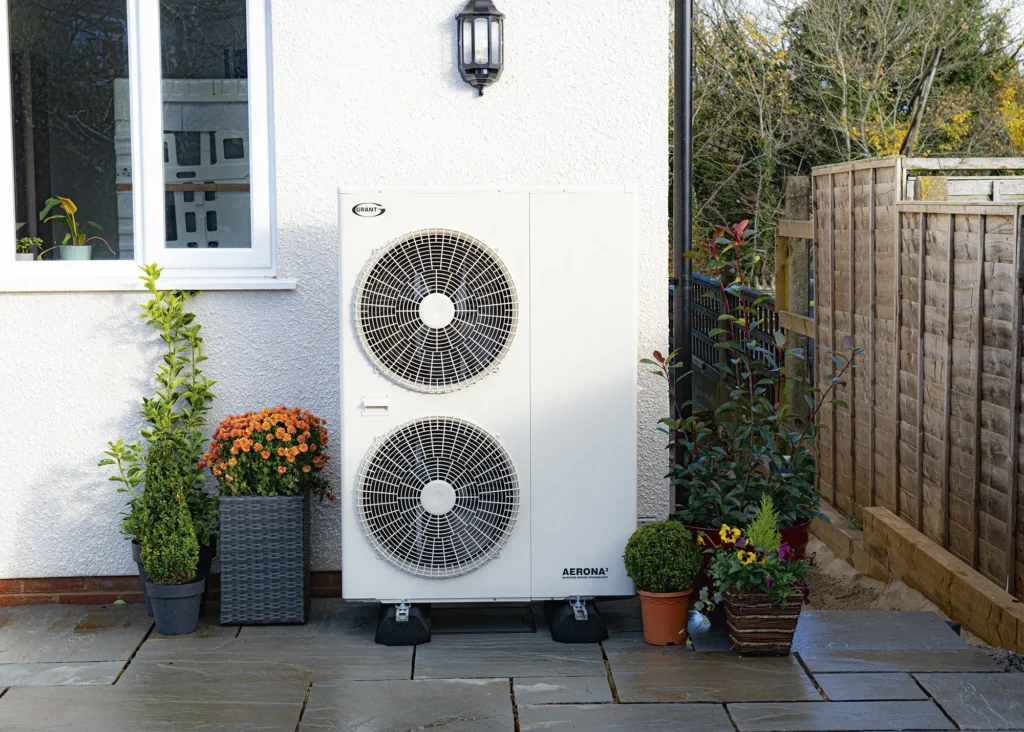
If your air source heat pump is located near a boundary, it could pay to invest in a low-noise model, such as the Quiet Mark-certified Aerona3 R32 13kW air source heat pump from Grant UK
You could retrofit your home to upgrade the insulation if you’re considering replacing your boiler with a heat pump. If you do this, it’s important to take a whole house approach. Vulnerable areas of heat leakage must be addressed in order to prevent cold spots forming via thermal bridging, as this could cause damp issues in your home.
If you have a pitched roof with a flat ceiling beneath, it will be easy to fit or top-up loft insulation. Original windows can be upgraded with secondary glazing, and the frames draughtproofed. You can also insulate suspended floor structures, although this work can be disruptive.
Cost-effective airtightness measures include closing chimneys or using good quality underlays on suspended floors. It’s essential, though, to ensure occupants (and the building) still have access to plenty of fresh air. So, check ventilation rates and look to at least meet the Building Regulations.
This level of retrofit may be sufficient to make a building heat pump-ready – ie the building will cost no more to heat with a heat pump than it would have done with a boiler (prior to the retrofit). But of course, there’s a financial and environmental cost to doing this work. You might decide it’s better to stick with the boiler after the fabric improvements are made, as your bills should already be lower. However, the concept of making a home heat pump-ready is an interesting one, especially if a wholesale switch to electric heating happens in the future.
Read More: How to Properly Insulate a Period House
QUICK GUIDE Hybrid heat pumpsIt’s not always necessary to completely replace a boiler with a heat pump. A hybrid system could be the best choice, combining your existing boiler with a heat pump. This has several benefits:
|
Does Your Home Have Heritage Status?
Most old buildings have heritage value, even if they are not in conservation areas or protected by a listing, in which case you’ll require listed building consent. Around 25% of the UK housing stock consists of traditionally-built homes, namely pre-1919 properties of brick or stone laid in lime mortar.
Many are Victorian or Edwardian terraces, which have often suffered the ravages of cement rendering, plastic window insertion etc – though most of these changes are reversible. Replacing the existing boiler with an an air source heat pump (ASHP) could constitute another interruption to the terrace rhythm.
Of course, services are generally located at the back of buildings. The rear of an older house has often been changed, and is thus less sensitive from a heritage perspective than the frontage (though not in all cases). So, it may be possible to site an ASHP here. Perhaps just as importantly, the existing boiler is usually located at rear, so the plumbing is much more accessible to connect up an ASHP (if it’s being installed as a like-for-like system).
Heat pumps are generally considered under permitted development, meaning you don’t require a formal planning application to install a heat pump. This isn’t the case for every property, however, so it’s worth checking with the council. For instance, you’ll always need planning and consent from the local conservation officer if you want to install an air source heat pump in a listed building or a house in a conservation area.
CASE STUDY Listed building renovation with air source heat pumpBeing grade II listed and within the South Downs National Park, architects and homeowners Mark Camillin and Liam Denny knew they’d need to apply for listed building consent for their project. The couple thoroughly researched the history of the property, what elements had been added when, and even tracing back nearly every owner since it was built in 1780. When they met with the local listed buildings officer, their research paid off, and he supported their design ideas. The home has been upgraded with several sustainable features. Conservation double-glazed windows replaced single glazing along with heritage-style aluminium bifolds and French doors. External cavity walls – with the exception of the original malmstone wall – were internally lined with insulating plasterboard. An air source heat pump heats hot water and the underfloor heating on both floors. “We chose air source as it didn’t require large areas of garden to be excavated and we’d had good experiences on our other properties,” says Mark. Solar PV panels were fitted to charge the couple’s car and reduce costs – the overall fuel bill came down from £4,000 per year in 2019 to just over £150 in 2022. |
What is Your Home’s Existing Heating Distribution System?
Heat pumps work most efficiently at low flow temperatures. The difference between the heat source and the delivery temperature determines how hard the heat pump has to work. The smaller the gap, the more the setup will run. This means that a low temperature distribution system is important.
Underfloor heating (UFH) is the most common partner for heat pumps, as this provides a large emitter in each room. The best systems will operate at around 35ºC. However, it can be difficult and sometimes impossible to retrofit underfloor heating into old buildings.
The impact of digging out solid floors is huge, and restrictions on head height and the need to alter thresholds and lintels may prevent you from laying the necessary insulation beneath UFH.
Learn More: Underfloor Heating Beginner’s Guide: How to Get Started with UFH
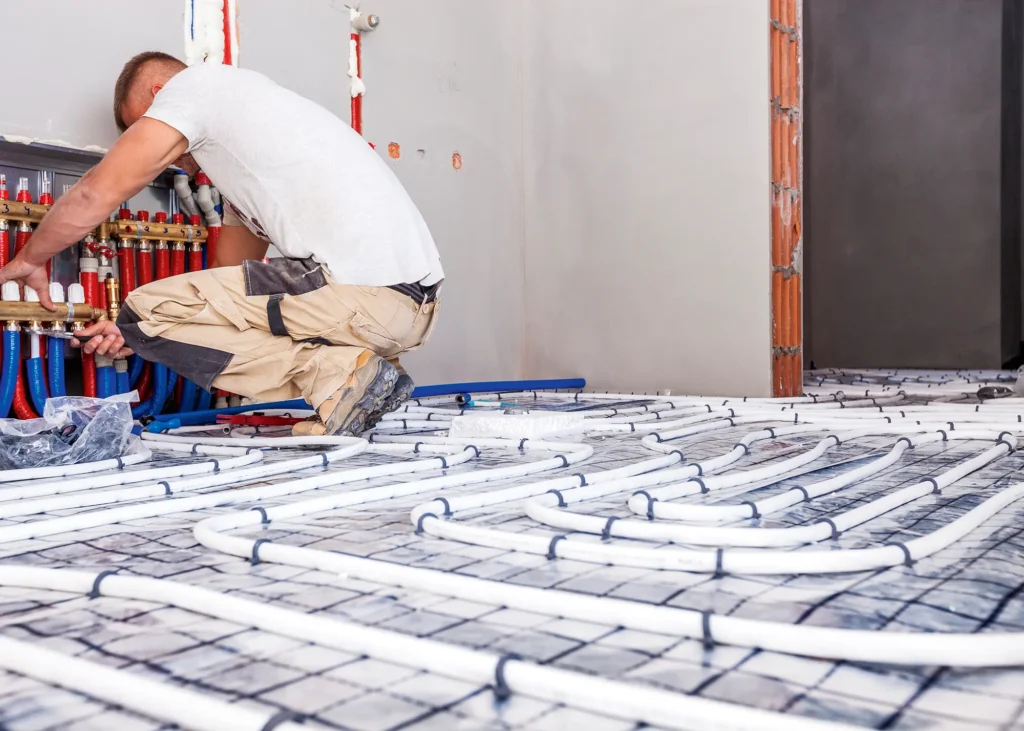
The pipework in your UFH network feeds back to the manifold, as with this system from Underfloor Heating Trade Supplies
Suspended floors present a different challenge, plus this tech may not be compatible with some original floor surfaces. There are underfloor heating retrofit systems designed to address some of these issues, but they won’t suit every old house.
When retrofitting a heat pump into a building previously heated by a gas or oil boiler, another option is to increase radiator size throughout the property. Where single panel radiators remain, these can be replaced by twin panel designs – if not, the distribution system will have to be extended, taking up more wall space.
If you don’t upgrade the radiators, then to provide the same level of heating as the boiler, your new heat pump would have to deliver at the same temperature. This would make it less efficient and more costly to run.
Relative Size of Demand for Hot Water
For some of you – large households, for instance – domestic hot water is likely to account for a significant portion of your total heat demand (and 100% of it in the warmer months). Over the course of a year, a boiler will probably be the cheaper option for hot water, as it’s built to deliver the higher temperatures (around 55ºC) required.
Of course, heat pump systems are also designed to provide hot water – but they’ll do so a bit less efficiently than for low-temperature space heating. That said, an air source heat pump will perform well for hot water in the summer months (although solar thermal panels could do the same job). And whatever the season, a heat pump will be much cheaper than using an electric immersion heater.
CLOSER LOOK Are air source heat pumps noisy?If you’re installing an ASHP in a terraced house, it will probably need to be located at the rear of the property (potentially at the side if an end-of-terrace, although this may not be feasible for technical reasons). The narrow nature of the plots in terraces means your air source heat pump will therefore inevitably be close to neighbours. There’s a planning regulation that limits the noise an ASHP can make to a maximum of 42 decibels (dB), as measured one metre away from any door or window to a habitable room of the neighbouring property. The calculation isn’t straightforward, but your installer can deal with it for you. If you get below the magic 42dB mark, the installation will be considered to meet the noise threshold to count as permitted development (PD). So, provided the other PD criteria are met, you won’t need planning permission. One way to help keep sound levels to a minimum is to invest in an ultra low-noise heat pump – look for products with Quiet Mark certification. |
How Much Carbon Can You Save if You Replace Your Boiler with a Heat Pump?
One of the most common reasons for replacing a boiler with a HP is to reduce carbon emissions. Thanks to the rapid and impressive decarbonisation of the electricity grid, switching from gas, oil or LPG boilers to heat pumps will now deliver a significant reduction in carbon emissions in use (at least 50%). But do bear in mind the embodied emissions of making the changeover.
If significant retrofit is required to make the building ready for a heat pump, this must be taken into account in any calculation of carbon savings. It’s likely to be many years before there is a net saving in carbon. Installing ground source heat pumps has significantly greater impact than fitting an air source heat pump.
With larger heat pumps, the house’s existing power supply may not be sufficient. So factor in the environmental (and financial) cost of upgrading to three-phase electricity.
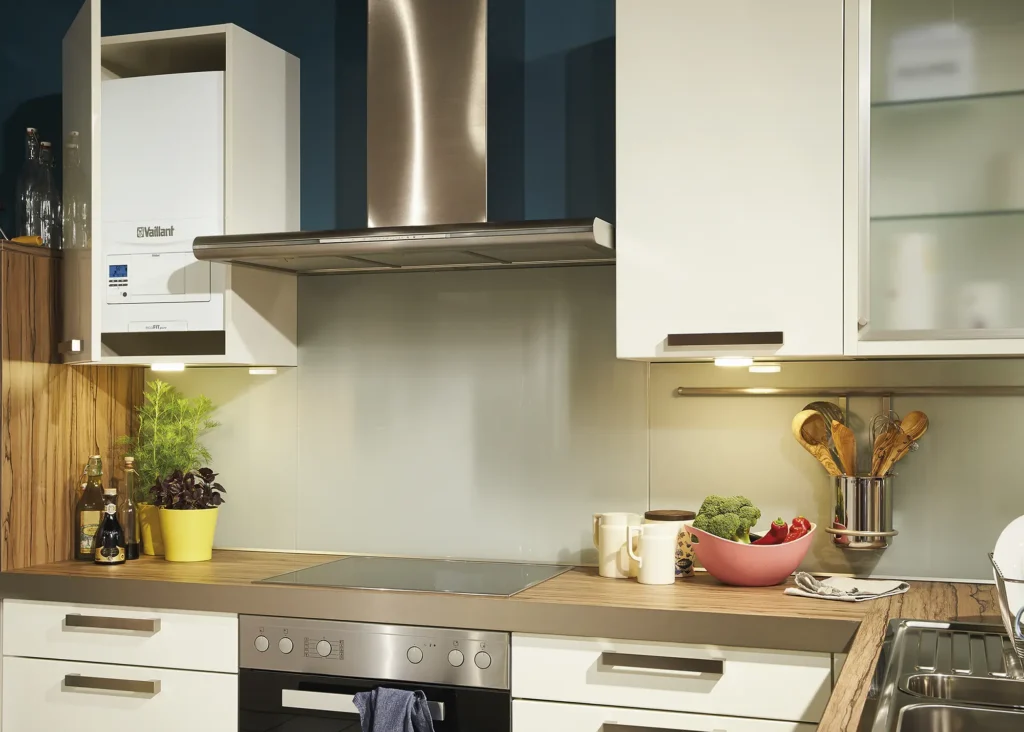
Vaillant offers a range of home climate technologies, from heat pumps through to boilers – such as this QuietMark-certified ecoFit compact combi
How Much Will It Cost to Replace a Boiler with a Heat Pump?
The running costs for a heat pump are slightly higher than oil or gas boilers. If the sales spiel given to you suggests otherwise, then ask to see independently verified and peer-reviewed evidence of heat pump performance in old buildings, then compare the relative costs of gas and electricity.
The upfront cost of installing a heat pump is also currently higher than for a gas boiler; especially for ground source heat pumps, where you need to bore or excavate for the collector loop. There are subsidies available under the Boiler Upgrade Scheme, but they don’t fully cover the gap – so there’s no getting away from a higher installation cost.
As of the 23rd October 2023, you can access the following under the Boiler Upgrade Scheme (BUS):
- £7,500 towards an air source heat pump
- £7,500 towards a ground source heat pump (this includes water source heat pumps)
- £5,000 towards a biomass boiler
If you want to ensure running costs are no higher than they are with your gas boiler, you’ll also need to account for the costs of retrofitting the building fabric and making any alterations to the distribution system.
More from Nigel: Heating a Small Home: Create an Efficient Heating Setup for Your House
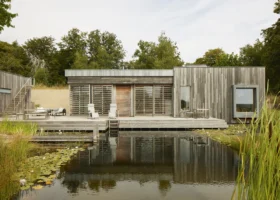
































































































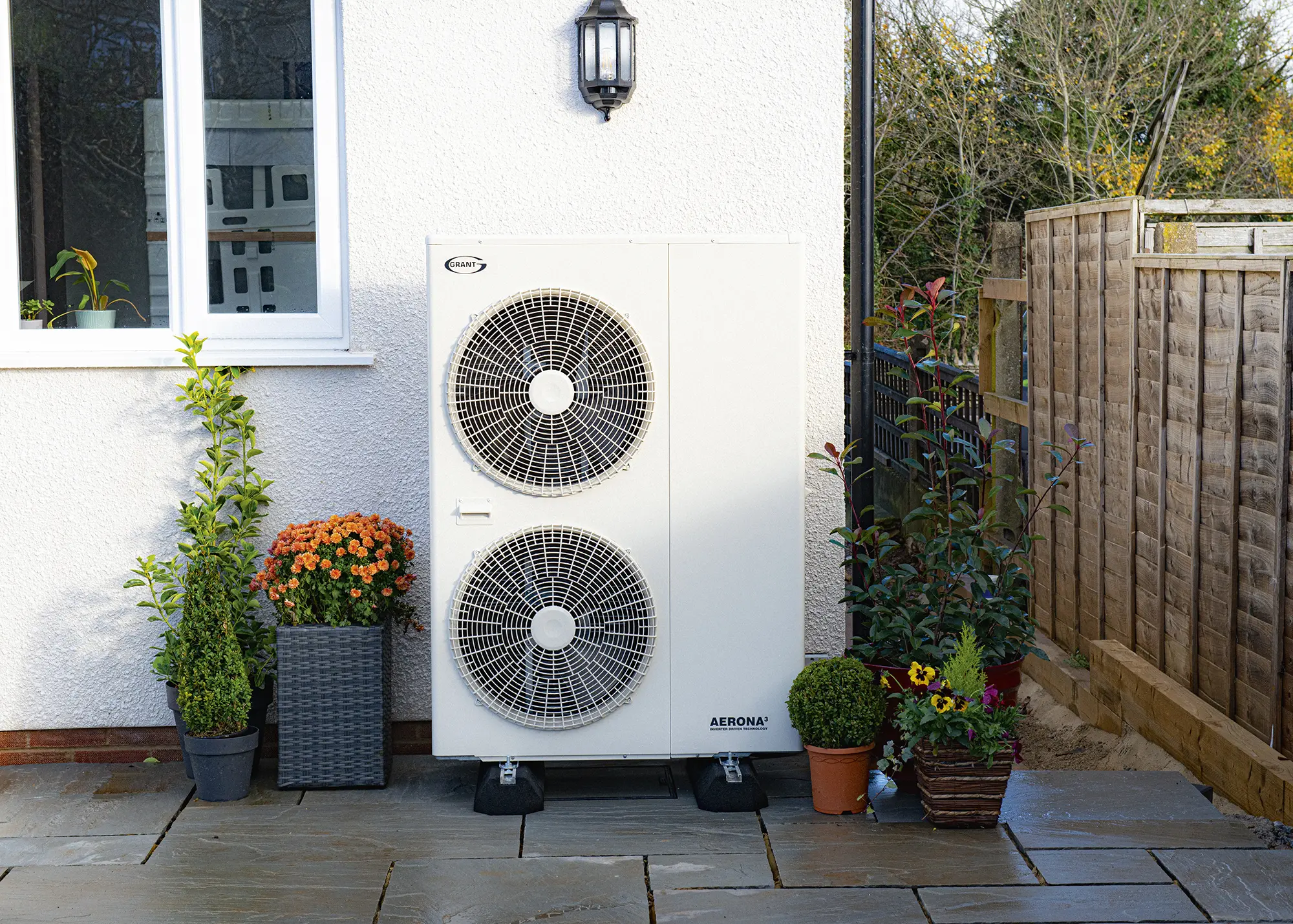
 Login/register to save Article for later
Login/register to save Article for later

